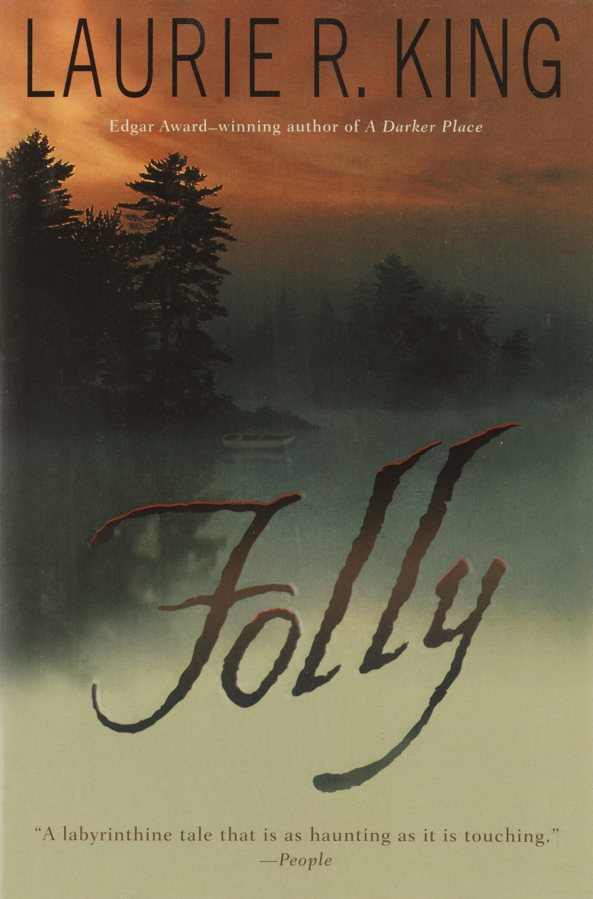Not so long ago, probably on one of those dark-gray nights when the rain sounds like a persistent solicitor tap-tap-tapping at your door, a reader emailed me with a question: Could I recommend a good, noirish mystery novel set in the Pacific Northwest? Knowing that the reading power of a crowd is far better than that of an individual (and also being very good at dodging hard questions, like a pickpocket eluding a lawman’s eye), I tossed the query out to all of you last month — and you did not disappoint. Here are some of the books and authors suggested:
“Folly” by Laurie R. King. Two readers suggested this 2001 novel, set on a fictional island in the San Juans and centered on an artist who uncovers and solves a murder. King is well known for her excellent Mary Russell/Sherlock Holmes series, which began with “The Beekeeper’s Apprentice.”
The Leo Waterman series by G.M. Ford. Another one selected by multiple readers, this 12-book series featuring a Seattle private investigator began with the deliciously titled “Who the Hell Is Wanda Fuca?” in 1995 and most recently continued with 2019’s “Heavy On the Dead.”
Curt Colbert and Waverly Fitzgerald. Colbert wrote a three-book series set in hard-boiled 1940s Seattle, starting with “Rat City,” and more recently “All Along the Watchtower,” set in 1999 and beginning with a corpse found on Jimi Hendrix’s grave. Fitzgerald, author of numerous books and a frequent collaborator with Colbert, wrote “Hard Rain,” a companion novel to “All Along the Watchtower”; both feature private investigators Matt Rossiter and Rachel Stern, telling the same story from different perspectives.
Glen Erik Hamilton’s Van Shaw series. Hamilton, a Seattle native now living in California, writes a present-day series featuring a former Army Ranger (and thief) named Van Shaw, set here in the Northwest. The six-book series begins with “Tough Crimes,” published in 2015; the latest, “Island of Thieves,” will be out in July.
“First Avenue” by Loren Clausen. Clausen is a former Seattle beat cop, and he sets this book and two subsequent ones (“Second Watch,” “Third & Forever”) in the town that he knew in the ’70s: pre-tech, gritty, a little grimy. “First Avenue,” unfolding around Pike Place Market and Pioneer Square, features a police officer trying to solve a dark case involving an abandoned baby.
“Trouble in Rooster Paradise” by T.W. Emory. Published in 2015, this hard-boiled novel takes place in 1950s Ballard, where an old-school private eye looks into the murder of a salesclerk in a high-end boutique — who just happened to die with the gumshoe’s business card in her pocket.
“Death and the Good Life” by Richard Hugo. Hugo — yes, the same one for whom Seattle’s Hugo House is named — is better known for his poetry, but in 1980 he published this mystery novel, featuring a Seattle cop who’s relocated to Montana — but ends up on a case that sends him all over the Northwest. I found a review of the book in Kirkus Reviews, calling it “straight, sharp, and nasty — a promising first case in a hard-boiled but relatively un-cliched mode.”
And finally: I’ve long been wanting to catch up with the Lillian Frost/Edith Head series, written by Renee Patrick (a pseudonym for Seattle-based writing couple Rosemarie and Vince Keenan) and beginning with “Design for Dying.” Head, as my fellow costume aficionados will know, was the multiple Oscar-winning costume designer for decades of Hollywood classic films, dressing the likes of Grace Kelly (“Rear Window,” “To Catch a Thief”) and Audrey Hepburn (“Roman Holiday,” “Sabrina”). Here, she joins forces with Lillian, a tart-talking salesgirl in 1937 Los Angeles, to solve a mystery involving a murdered party girl who dies in a gown “borrowed” from the Paramount Pictures wardrobe department.
Though it’s a bit overlong and definitely dialogue-heavy, “Design for Dying” is great fun, and I’m looking forward to reading the entire series (number 4, “The Sharpest Needle,” came out earlier this year). The Keenans clearly know and love Old Hollywood, vintage fashion, and deliciously old-school descriptive prose: A man’s voice is “what God would sound like if he were your accountant”; a starlet smiles with “teeth gleaming as if each had its own spotlight.” And while I wished Head had a bigger role in the story — maybe so in later books? — she’s an irresistible, no-nonsense heroine, solving mysteries while doling out fashion advice in the same breath. “That’s a lovely color for you, but a terribly cheap fabric,” she tells a nameless woman while passing by on the sidewalk. “Remember, you get what you pay for.”



